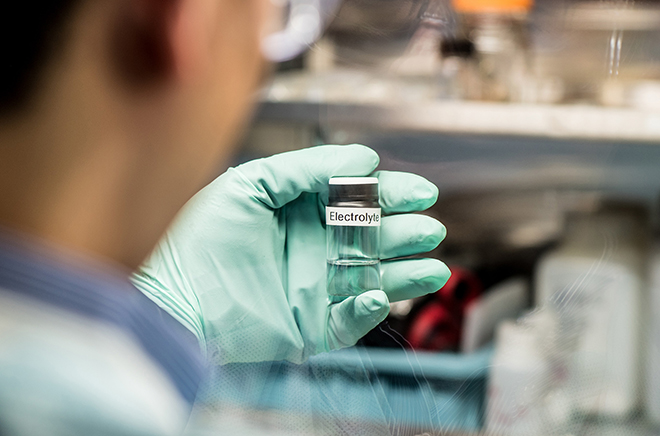Researchers at the DOE’s Pacific Northwest National Laboratory have discovered that the “special sauce” of batteries is all about the salt concentration. By getting the right amount of salt right where they want it, they’ve demonstrated that a lithium-metal battery can undergo about seven times more charge/discharge cycles than batteries with conventional electrolytes.
Finding an electrolyte solution that doesn’t corrode the electrodes in a lithium-metal battery is a challenge, but PNNL’s approach, described in a recent paper published in Advanced Materials, creates a protective layer around the electrodes.
The new design is not without drawbacks, however. The first is the high cost of lithium salt. The high concentration also increases viscosity and lowers conductivity of the ions through the electrolyte.
“We were trying to preserve the advantage of the high concentration of salt, but offset the disadvantages,” said PNNL Senior Battery Researcher Ji-Guang Zhang. “By combining a fluorine-based solvent to dilute the high-concentration electrolyte, our team was able to significantly lower the total lithium salt concentration, yet keep its benefits.”
PNNL tested its patent-pending electrolyte on an experimental battery cell similar in size to a watch battery. It was able to retain 80 percent of its initial charge after 700 charge/discharge cycles, which is an improvement over standard electrolytes by approximately 600 cycles. The next steps are to scale up testing to pouch batteries and to evaluate performance with sodium-metal batteries and other metal batteries.
Source: ChargedEVs



